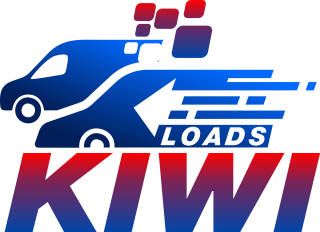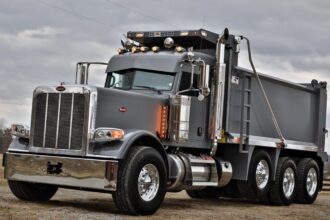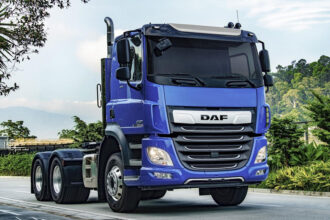Table of Contents
Introduction
Starting a semi-trailer business offers you a promising opportunity in the logistics and transportation industry. A semi-trailer, which you likely see frequently on highways, is a trailer without a front axle, designed to be attached to a truck.
When you embark on this venture, you need to understand that your role goes beyond simply owning trailers; you manage logistics, maintenance, and customer relations. You must navigate regulations, secure financing, and select appropriate trailers to meet diverse hauling needs.
Success in this business requires a comprehensive understanding of market demands, strategic planning, and effective management skills. By focusing on these elements, you position yourself to capitalize on the growing demand for freight transport, making your semi-trailer business a vital part of the supply chain.
To start a semi-trailer business:
1. Research Market Demand
2. Create a Plan
3. Obtain Required Licenses
4. Secure Necessary Funding
5. Purchase Quality Trailers
6. Hire Experienced Drivers
7. Implement Maintenance Routines
8. Market Your Services
Recap
1. Research Market Demand
To start a semi-trailer business, you must first research market demand. You need to understand the industry landscape and identify opportunities and challenges. Begin by analyzing regional transportation needs.
Look into industries that rely heavily on semi-trailers, such as retail, manufacturing, and agriculture. You should examine market trends, including the rise in e-commerce, which increases demand for freight services.
Also, you need to evaluate your competition. Identify other semi-trailer businesses in your area and understand the service offerings, pricing, and customer base of these competitors. This helps you find gaps in the market where you can position your business.
You must also engage with potential customers. Talk to logistics managers, business owners, and other stakeholders to understand specific needs and pain points. This direct feedback is invaluable.
By thoroughly researching market demand, you ensure your semi-trailer business addresses real needs and positions itself for success. This step is crucial for building a solid foundation for your venture.
>>>MORE: Semi-Trailer Business Plan
2. Create a Plan
Creating a plan is vital when starting your semi-trailer business. Your business plan serves as a roadmap, guiding you through each stage of launching and growing your company. Begin by defining your business goals and objectives. You need to outline the services you will offer, whether it’s long-haul freight, regional delivery, or specialized transport.
Next, you must develop a detailed financial plan. Calculate your startup costs, including purchasing trailers, licensing, insurance, and initial operating expenses. Project your revenue and expenses to understand your cash flow needs. You should also plan for financing, identifying potential sources of funding, such as loans, investors, or personal savings.
Additionally, you need to establish your marketing strategy. Determine how you will attract and retain customers, and differentiate your services from competitors. Outline your operational plan, detailing how you will manage day-to-day activities, maintain your fleet, and ensure regulatory compliance.
By creating a comprehensive plan, you prepare your semi-trailer business for success, setting clear priorities and strategies to achieve your goals.
3. Obtain Required Licenses
Obtaining the required licenses is mandatory for launching your semi-trailer business. You must ensure that your business complies with federal, state, and local regulations. First, you need to register your business with the appropriate authorities, securing a business license to operate legally.
You must also obtain a U.S. Department of Transportation (DOT) number and Motor Carrier (MC) number from the Federal Motor Carrier Safety Administration (FMCSA). These numbers are essential for operating commercial vehicles across state lines.
You need to comply with state-specific requirements, which might include additional permits or certifications. Check with your state’s Department of Transportation for detailed information. Insurance is another key requirement. You must purchase liability insurance and cargo insurance to protect your business and clients.
By obtaining all necessary licenses and permits, you ensure your semi-trailer business operates legally and safely, building a trustworthy reputation in the transportation industry. This step is fundamental to your business’s credibility and compliance.
4. Secure Necessary Funding
You need to assess your financial needs accurately and secure funding as it is a critical step in starting your semi-trailer business. Calculate the costs of purchasing semi-trailers, licensing, insurance, and initial operating expenses.
Then, explore various funding options. You can apply for small business loans from banks or credit unions. Prepare a solid business plan to present to lenders, demonstrating your strategy and potential for profitability. You might also consider seeking investors who believe in your business idea.
Additionally, you should explore government grants or subsidies available for transportation businesses. Crowdfunding platforms can also be a viable option if you can effectively pitch your business concept to a broader audience.
Personal savings can provide a foundation, but relying solely on it might be risky. Diversify your funding sources to ensure financial stability. By securing the necessary funding, you give your semi-trailer business the financial backing it needs to start and grow successfully.
5. Purchase Quality Trailers
You can’t run a semi-trailer business without purchasing quality trailers. The type and quality of trailers you choose directly impact your operational efficiency and customer satisfaction. You need to assess your business needs to determine the appropriate trailer types, whether flatbed, refrigerated, or dry van trailers.
When you start this process, research reputable manufacturers and suppliers. You should compare specifications, durability, and pricing. Consider both new and used options, keeping in mind that new trailers often offer better reliability and longer service life, while used trailers can be more cost-effective.
You must inspect each trailer thoroughly before you purchase. Check for structural integrity, braking systems, and overall maintenance history. Investing in high-quality trailers minimizes downtime and repair costs, ensuring smooth operations.
Financing options are available if upfront costs are a concern. By prioritizing quality in your semi-trailer purchases, you set a solid foundation for your business, enhancing your ability to meet customer demands and maintain a reliable fleet.
6. Hire Experienced Drivers
Hiring experienced drivers is vital for the success of your semi-trailer business. Your drivers are the backbone of your operations, ensuring timely and safe deliveries. Begin by defining clear job requirements. You need drivers with a valid commercial driver’s license (CDL) and a clean driving record.
When you start the recruitment process, advertise in industry-specific job boards, trucking associations, and local job fairs. You should conduct thorough interviews and background checks. Prioritize candidates with extensive experience in driving semi-trailers and those who demonstrate reliability and professionalism.
You must also offer competitive compensation and benefits to attract and retain top talent. Consider providing ongoing training and professional development opportunities to keep your drivers updated on safety protocols and industry regulations.
By hiring experienced drivers, you enhance the safety and efficiency of your semi-trailer business. This step ensures that your operations run smoothly, customer satisfaction is maintained, and your business builds a strong reputation for reliability.
>>>GET SMARTER: Semi-Trailer Business Accessories You Need to Succeed
7. Implement Maintenance Routines
Take note of maintenance routines for your semi-trailer business. Regular maintenance ensures the longevity and reliability of your trailers, reducing downtime and costly repairs. You need to establish a comprehensive maintenance schedule that includes daily, weekly, and monthly checks.
You must conduct daily inspections before and after each trip. These checks should cover tires, brakes, lights, and overall trailer condition. Weekly, you should perform more detailed inspections, focusing on critical components like the suspension system and coupling devices.
Monthly, you need to schedule professional inspections and servicing. Partner with reliable mechanics or service centers experienced in semi-trailer maintenance. Keep detailed records of all maintenance activities and repairs to track the health of your fleet.
By implementing consistent maintenance routines, you enhance the safety and efficiency of your operations. This step helps you avoid unexpected breakdowns, ensuring that your semi-trailer business runs smoothly and maintains a high standard of service. Prioritizing maintenance is essential for sustaining long-term success in the transportation industry.
8. Market Your Services
The growth of your semi-trailer business depends on effective marketing of your services. You need to develop a comprehensive marketing strategy to attract and retain customers. Start by identifying your target market, such as manufacturers, retailers, or agricultural businesses.
You must create a professional online presence. Build a website that showcases your services, fleet, and customer testimonials. Utilize search engine optimization (SEO) to increase your website’s visibility. You should also engage in social media marketing. Platforms like LinkedIn, Facebook, and Instagram allow you to connect with potential clients and industry partners.
Networking is essential. Attend industry conferences, trade shows, and local business events to establish relationships with key stakeholders. You can offer promotional deals or discounts to attract new customers. Email marketing campaigns are another effective way to keep your clients informed about your services and updates.
By marketing your services strategically, you ensure your semi-trailer business reaches a broad audience, builds a solid reputation, and secures a steady stream of clients.
Recap
Starting a semi-trailer business involves several key steps. You research market demand, create a plan, obtain licenses, secure funding, purchase quality trailers, hire experienced drivers, implement maintenance routines, and market your services. By following these steps, you ensure your business operates efficiently and successfully in the competitive transportation industry.



















